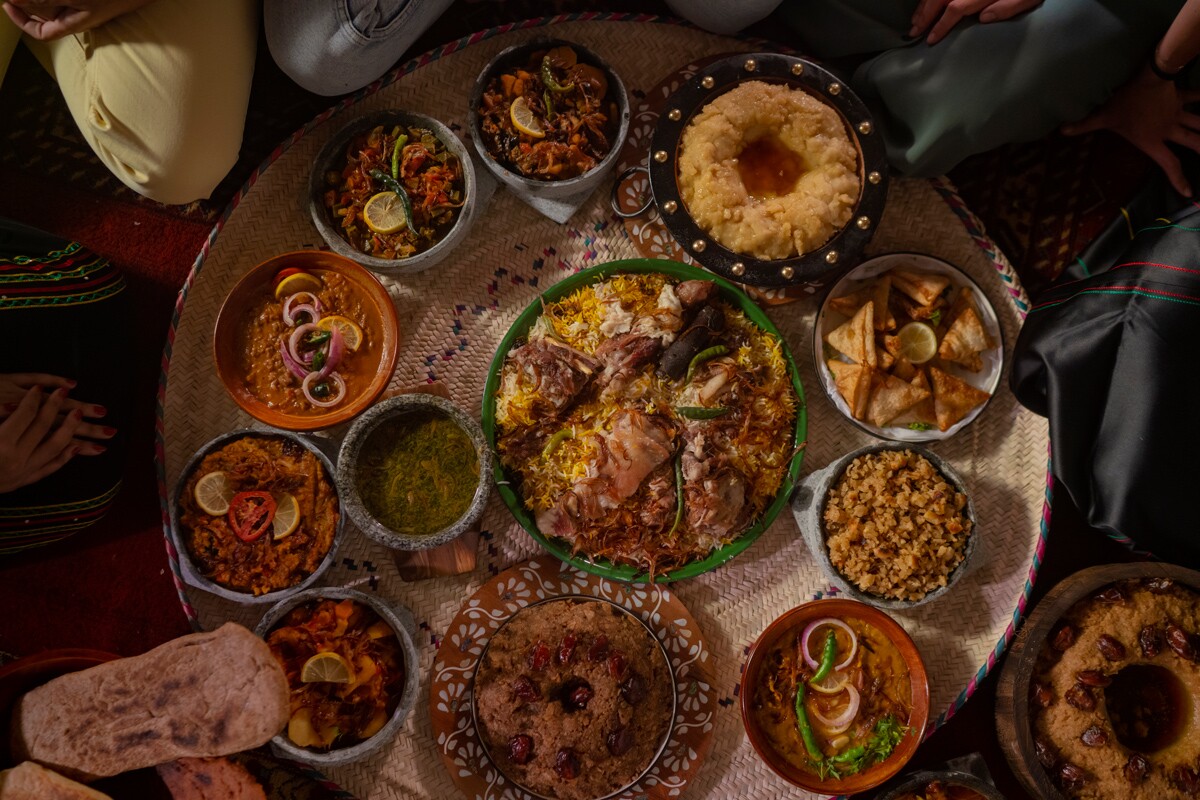

Rediscovering traditional ingredients
Saudi Arabia’s culinary identity remains deeply rooted in indigenous ingredients; therefore, renewed efforts aim to restore these staples to prominence. Consequently, locally sourced grains like hasawi rice from Al-Ihsaa and ancient grains like sorghum and millet are regaining widespread popularity. Moreover, camel milk, valued for its nutrition, is now being innovatively used in modern dairy products and reimagined desserts across the kingdom. Furthermore, chefs are turning to date-based sweeteners as natural sugar alternatives, promoting both healthier choices and cultural authenticity in cuisine.
The revival of heirloom recipes
A key element of Saudi Arabia’s cultural heritage is, therefore, the ongoing preservation and adaptation of traditional heirloom culinary recipes. As a result, dishes like jareesh and matazeez are now reimagined through refined techniques and enhanced with modern, elegant presentation styles.
Additionally, marekh, an aromatic native plant, is increasingly used in innovative ways such as smoking and presenting roasted meats with dramatic flair. Meanwhile, leading Saudi chefs are preserving relevance by blending fusion elements and contemporary plating without compromising these dishes’ deeply authentic, traditional flavors. Furthermore, younger generations support this revival through heritage workshops and social media, actively helping preserve and promote Saudi Arabia’s culinary legacy.
Fusion of regional Saudi cuisines
Saudi Arabia’s vast geography has naturally shaped diverse regional cuisines, from Hijaz’s spice-rich dishes to Najd’s Bedouin-inspired culinary traditions. Today, however, these distinct culinary identities are blending as restaurants increasingly aim to present a comprehensive and unified Saudi dining experience. For example, fine-dining venues in Riyadh now combine Asir’s bold smoked meats with the seafood specialties traditionally found in Jazan’s cuisine. Consequently, this fusion represents a larger movement to highlight Saudi Arabia’s culinary diversity while transcending regional limitations.
The role of seasonal and sustainable practices
Incorporating seasonal and sustainable cooking is another way Saudi chefs today continue drawing deep inspiration from their rich cultural heritage. Historically, Saudi cuisine depended on seasonal produce and traditional preservation methods, which ensured sustainability in harsh desert environments and limited resources. Now, this practice is being revived through farm-to-table efforts that emphasize local sourcing. Moreover, the sustainability movement aligns with Vision 2030, supporting national goals to strengthen agriculture, enhance food security and promote environmental responsibility.
The influence of Saudi Coffee culture
Saudi Arabia’s UNESCO-recognized coffee culture now plays an increasingly influential role in shaping the country’s vibrant and evolving culinary landscape. Traditionally brewed Saudi Qahwa, flavored with cardamom and saffron, is now inspiring creative interpretations in both sweet and savory contemporary dishes. Consequently, cafés across the kingdom are crafting Qahwa-infused pastries, coffee-marinated meats and inventive desserts. Overall, cultural heritage continues to shape Saudi cuisine by reviving heirloom ingredients, regional recipes and sustainable practices. As talented chefs rediscover traditional flavors while embracing innovation, Saudi Arabia’s food scene becomes increasingly dynamic, relevant and globally appealing. Therefore, hospitality professionals must understand these culture-driven trends to offer truly authentic and immersive dining experiences.

Walid AlHashash,
head of Mood Consultancy and Contracting
mood.sa
@moodboosters.sa










